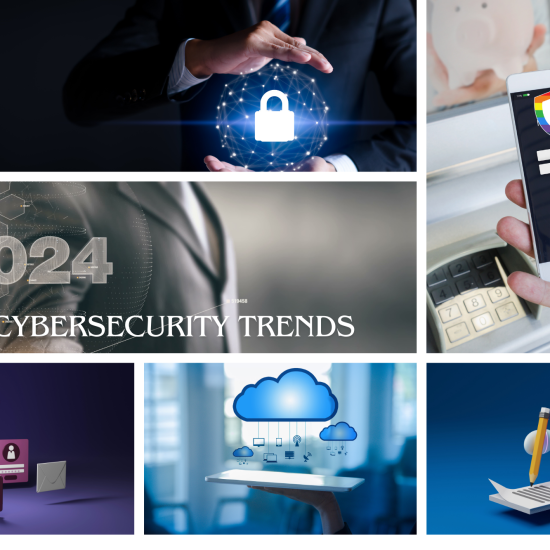Generative AI: A Powerful Tool for Business but Requires a Strategic Approach to Cybersecurity
Generative AI is an up-and-coming form of artificial intelligence that enables users to create new content in various formats, such as text, imagery, audio, and video. It’s no surprise that many businesses have already implemented or are considering the use of generative AI to support their daily operations and workflows. Nonetheless, the rapid growth of this technology has raised concerns about cybersecurity and regulatory compliance, which need to be carefully examined as companies strengthen their cybersecurity postures. However, what many people are unaware of is that this same technology can also complement security management tools and teams if used strategically.
In this article, you will read about,
Understanding Generative AI
Top Cybersecurity Risks Associated with Generative AI
The Role of Generative AI in Cybersecurity Efforts
Leading AI-Generated Security Solutions to Monitor
How can Rainbow Secure help?
Understanding Generative AI
Generative AI is a category of artificial intelligence that produces original content. Unlike traditional AI, which depends on predetermined rules and data patterns, generative AI employs sophisticated algorithms to learn from existing data and generate innovative outputs. This technology has been extremely useful in various fields, such as image creation, language processing, and cybersecurity.
Top Cybersecurity Risks Associated with Generative AI
Generative AI comes with several potential security risks, particularly at the data level. Here are some of the top security risks companies and consumers face when using generative AI:
- Vulnerabilities During and After Model Training: Generative AI models are trained on data collected from various sources, which means it is unknown what data gets exposed to additional attack surfaces. Due to the extended periods of data storage and lack of robust security rules, threat actors can access and manipulate training data at any stage of the training process.
- Violation of Personal Data Privacy: The lack of structure in place to regulate the data input into generative models means that sensitive or personal data can be used without adhering to regulations or obtaining permission from the source. PII can easily get into the wrong hands, leading to anything from account takeover to credit card theft.
- Exposure of Intellectual Property: Companies may unintentionally expose proprietary company data to generative models, causing harm. This exposure typically occurs when employees upload company code to the system, exposing intellectual property, API keys, and other confidential information.
- Cybersecurity Jailbreaks and Workarounds: Various online forums offer “jailbreaks,” or secret ways for users to teach generative models to work against established rules. These jailbreaks and workarounds can cause security issues, enabling sophisticated phishing and malware schemes that are more difficult to detect than traditional hacking attempts. For example, ChatGPT recently tricked a human into solving a CAPTCHA puzzle on its behalf.
Overall, it is essential to understand the potential security risks associated with generative AI and take the necessary precautions to mitigate them.
- Carefully read security policies from generative AI vendors. Major vendors now provide extensive documentation explaining how their tools work and how user agreements function. Review their policies on data deletion and timeframes, data usage, traceability, log history, anonymization, and regulatory compliance requirements. Opt for vendors that offer opt-in and opt-out options for data usage and storage.
- Avoid inputting sensitive data when using generative models. It’s hard to tell how much of your data will be used to train future iterations or how long it will be stored in the vendor’s data logs. Instead, create synthetic data copies or avoid using these tools entirely when working with classified data.
- Keep your generative AI models updated. Regular updates can include bug fixes and security optimizations that keep your tools at peak performance.
- Train your employees on appropriate use. Educate employees on what kinds of data they are allowed to use as inputs, what parts of their workflow can benefit from generative AI tools, and regulatory compliance expectations. Additionally, train them on basic cybersecurity awareness to help identify phishing attempts and other attack vectors.
- Use data governance and security tools. Invest in data loss prevention, threat intelligence, cloud-native application protection platform (CNAPP), and/or extended detection and response (XDR) tools to protect your entire attack surface, including any third-party generative AI tools you may be using.
The Role of Generative AI in Cybersecurity Efforts
Generative AI has the potential to expose organizations to new attack vectors and security risks, but it can also support cybersecurity goals when used strategically. Here are some ways that generative AI tools can be implemented in cybersecurity:
- Scenario-driven cybersecurity training: This approach utilizes synthetic data and other features to generate simulated attacks, scenarios, and environments for cybersecurity training.
- Enhancing Threat Detection: Cybersecurity experts can use Generative AI algorithms to identify patterns that signature-based detection systems may have missed. The algorithms learn to recognize unusual behaviors and potential threats by analyzing large amounts of historical data from diverse sources. This enables analysts to detect attacks that have not been previously encountered, thus providing proactive defense mechanisms.
- Predictive Analytics for Vulnerability Assessment: Generative AI algorithms can help identify potential weaknesses in networks, systems, or software by analyzing historical data and recognizing patterns. Predictive analytics provides organizations with valuable insights to assess their cybersecurity posture and take preventive measures to mitigate potential risks.
- Automated Incident Response and Remediation: In a cyber-attack, swift action is crucial to minimize damage and protect sensitive information. Generative AI algorithms can analyze the characteristics of an attack and generate appropriate responses. By using real-time threat intelligence, these algorithms can autonomously deploy countermeasures, isolate compromised systems, and initiate incident response protocols. Automation saves time and reduces human error, ensuring a rapid and effective response to cyber threats.
- Synthetic data generation: This method can be used to securely generate anonymized data copies for AI and software app development, providing an extra layer of protection.
- Contextualized security monitoring, reporting, and recommendations: This tool helps security teams search existing code and networks for vulnerabilities, offering contextualized recommendations for remediation.
- Supply chain and third-party risk management: Generative AI supports risk management, predictive maintenance, fraud detection, relationship management, and other components of supply chain and partner cybersecurity management.
- Threat intelligence and hunting: Generative AI can assess massive amounts of data at once, searching for security vulnerabilities and more significant problems. Some tools can also provide recommendations for improving security outcomes with suggested tools and infrastructure changes.
Leading AI-Generated Security Solutions to Monitor
Here are some of the top generative AI security solutions to look out for:
Google Cloud Security AI Workbench
Google’s latest innovation, powered by Sec-PaLM and built on Google Cloud’s Vertex AI, provides advanced threat and security intelligence, behavioral analysis, malware detection, and vulnerability management.
Microsoft Security Copilot
Microsoft’s Security Copilot is one of the most targeted security solutions in its range of generative AI products. It streamlines incident response, security reporting, and threat hunting for users and integrates insights from Microsoft Sentinel, Microsoft Defender, and Microsoft Intune.
Cisco Security Cloud
Cisco is incorporating generative AI capabilities into its Security Cloud and Collaboration and Security portfolios. The new features make threat response and policy management easier and more conversational.
Generative AI has the potential to significantly enhance cybersecurity measures. However, its adoption raises ethical concerns and obstacles. One such hurdle is ensuring that the training datasets are diverse, representative, and free from biases as these algorithms learn from vast amounts of data. Additionally, transparency and accountability in the decision-making processes of these AI systems are essential, as they may impact critical security measures.
Moreover, with the rapid advancement and sophistication of Generative AI technology, cybercriminals may potentially exploit these tools to launch advanced attacks. This situation necessitates continuous research and development to stay ahead of adversaries and mitigate emerging risks.
How can Rainbow Secure help?
Right amount of data and system access to right person or role at right time is the key to organizations being able to use digital tools and platforms to serve the customer base and stay compliant.
Next Generation Rainbow Secure platform is a modern identity authentication (MFA) and single sign- on (SSO) solution for your business across on-premises and cloud environments. It’s backed by an experienced team of cloud and security experts, years of innovation, and partnerships with leading cloud platforms. Rainbow Secure is a Leader in Smart and Secure Digital Solutions that work for you.
Insider Threats: Rainbow Secure assists in mitigating insider threats by implementing access controls, user monitoring, and privilege management solutions. Also, if the user leaves behind unlocked devices, saved passwords in the password manager or browser can be misused by malicious insiders. Interactive login security from Rainbow Secure helps prevents unauthorized access and protects against data theft or misuse by privileged users.
ChatGPT Security for business: Secure your ChatGPT login and Data with Rainbow Secure MFA Plugin.
Secure AI Integration: Consult Rainbow Secure Team to integrate AI in your business workflows powered by Azure and Rainbow Secure API.
Secure Workforce & Customer login: Use Authentication Plug-in by Rainbow Secure to secure workforce and customer logins. In this plug-in, you get a multi-dimensional password, passwordless login solutions with AI monitoring, Risk Analytics, and location fencing.
IoT Friendly Security: IoT platform developers can secure their cloud endpoints, and user logins (both admin and customer) against unauthorized access and scripted malware attacks using easy to adapt and support multi-layer interactive rainbow secure authentication solutions and services that includes but not limited to security assessment, API Security, secure user onboarding, and risk analytics.
Secure Data and its Backups: We provide Cloud based data vault and data archive solutions backed by Microsoft Azure and secured by our authentication plugin and industry best practices to give you ransomware protection, help with data governance and disaster mitigation.
Database Security: We provide technical consulting services to Secure Databases in cloud and on premise. You get best protection for your data in databases using native and third-party security tools.
Meet Compliance Requirements: Use Authentication Plug-in by Rainbow Secure with your business application and in SSO (Single Sign-on) and meet industry standards and compliance regulations such as NIST, ISO, FTC, SOX, SOC2, CMMC, CMMI, HIPAA, PCI, and others.
Securely communicate and Collaborate: Use Secure Business Email by Rainbow Secure and get protection against account takeover, phishing, ransomware, and automated login cyber frauds. In this email, you get options to send encrypted emails, single sign-on with Office 365, and Google, and 1 TB one drive storage.
Connect Business applications: Get one unified login using Rainbow Secure Single Sign-On
Manage User Onboarding / Offboarding using Rainbow Secure IAM
Verify User using Smart Multi-factor MFA. Smart Multi-Factor Authentication from Rainbow Secure which adjusts to your use case, reduces the cyber liabilities of a business from stolen credentials and improves productivity, and enhances user experience.
Do you have more questions about how innovative and patented Rainbow Secure products adjusts to your use case, reduces the cyber liabilities of a business from stolen credentials and improves productivity, and enhances user experience? Contact us today. Email us at Hello@rainbowsecure.com







